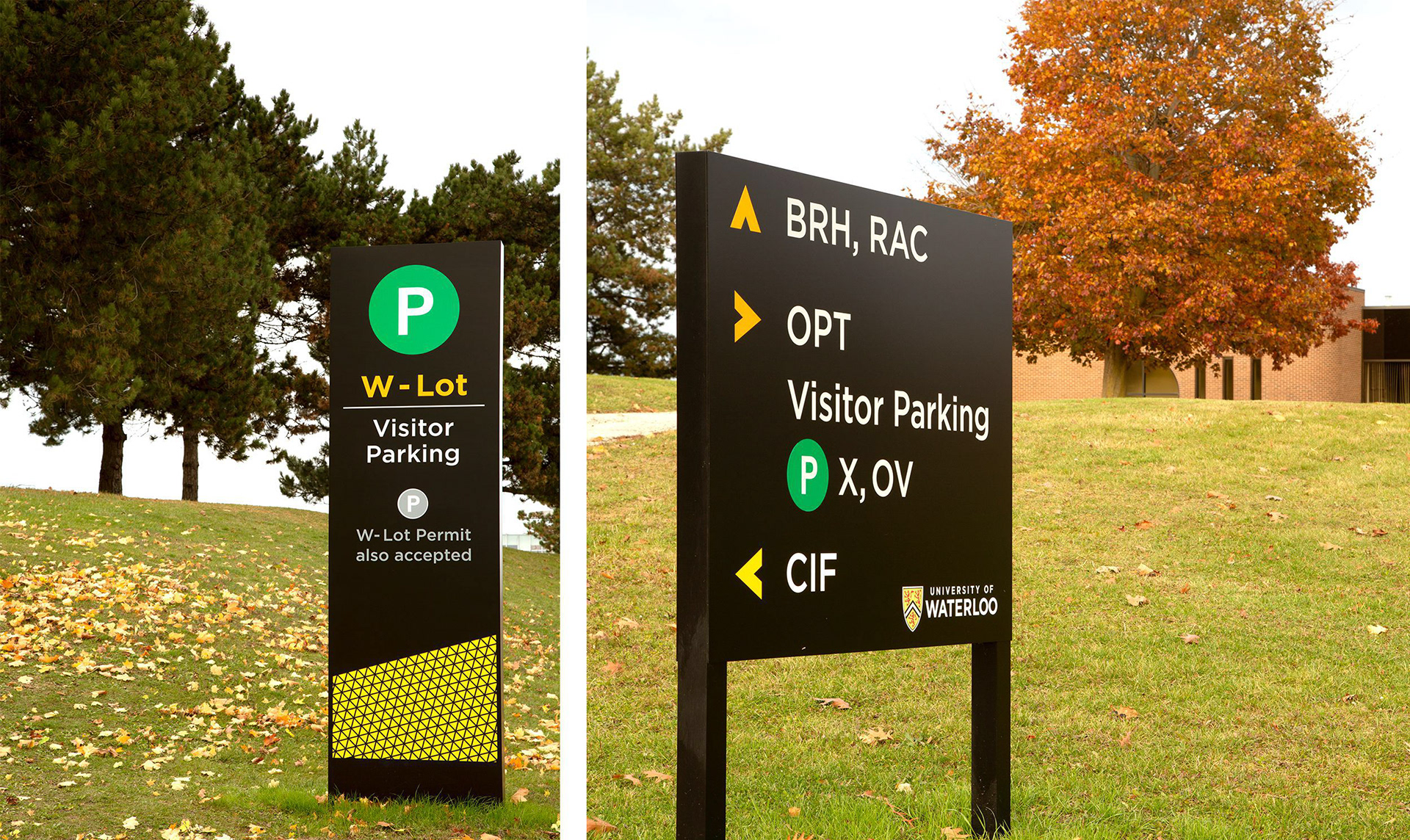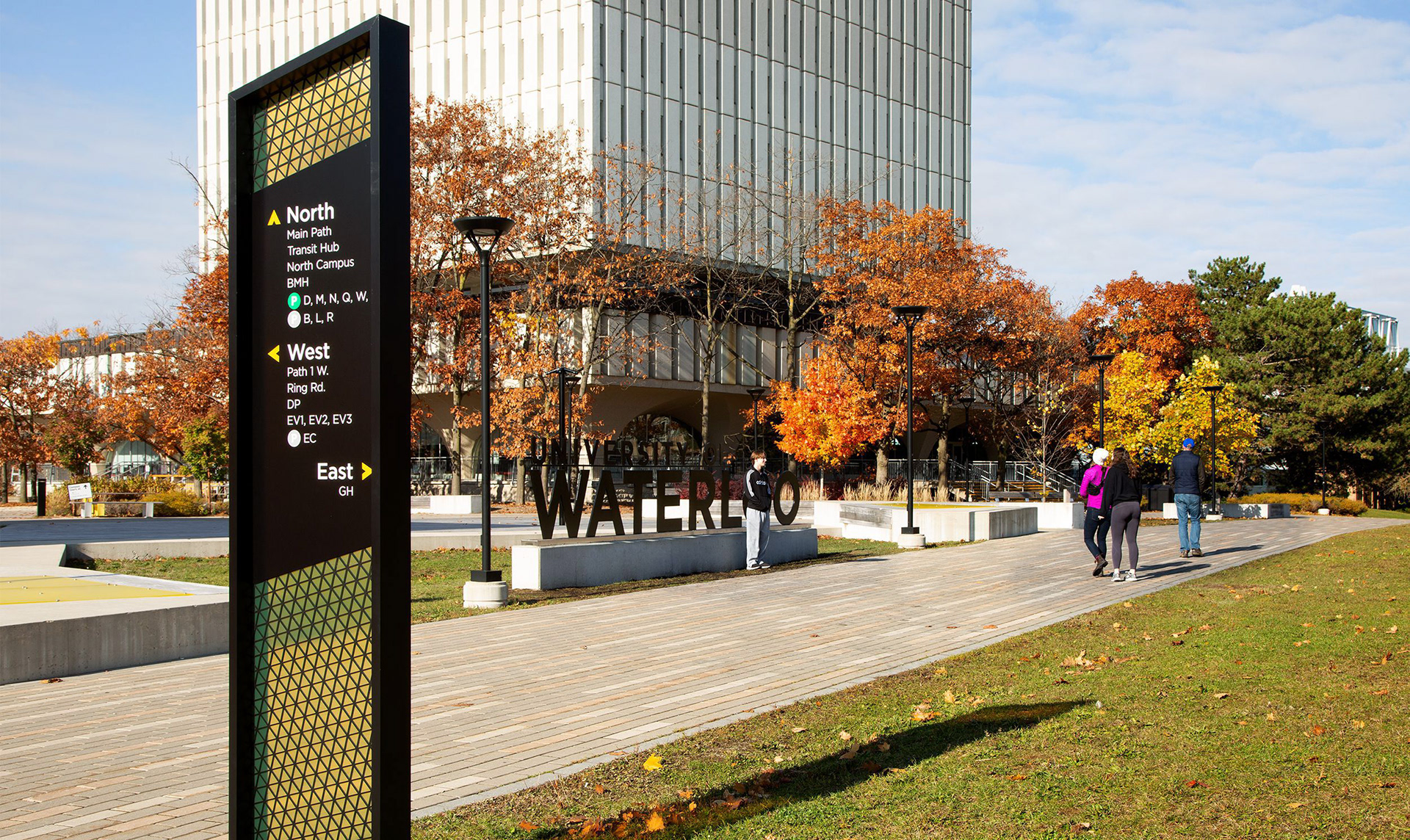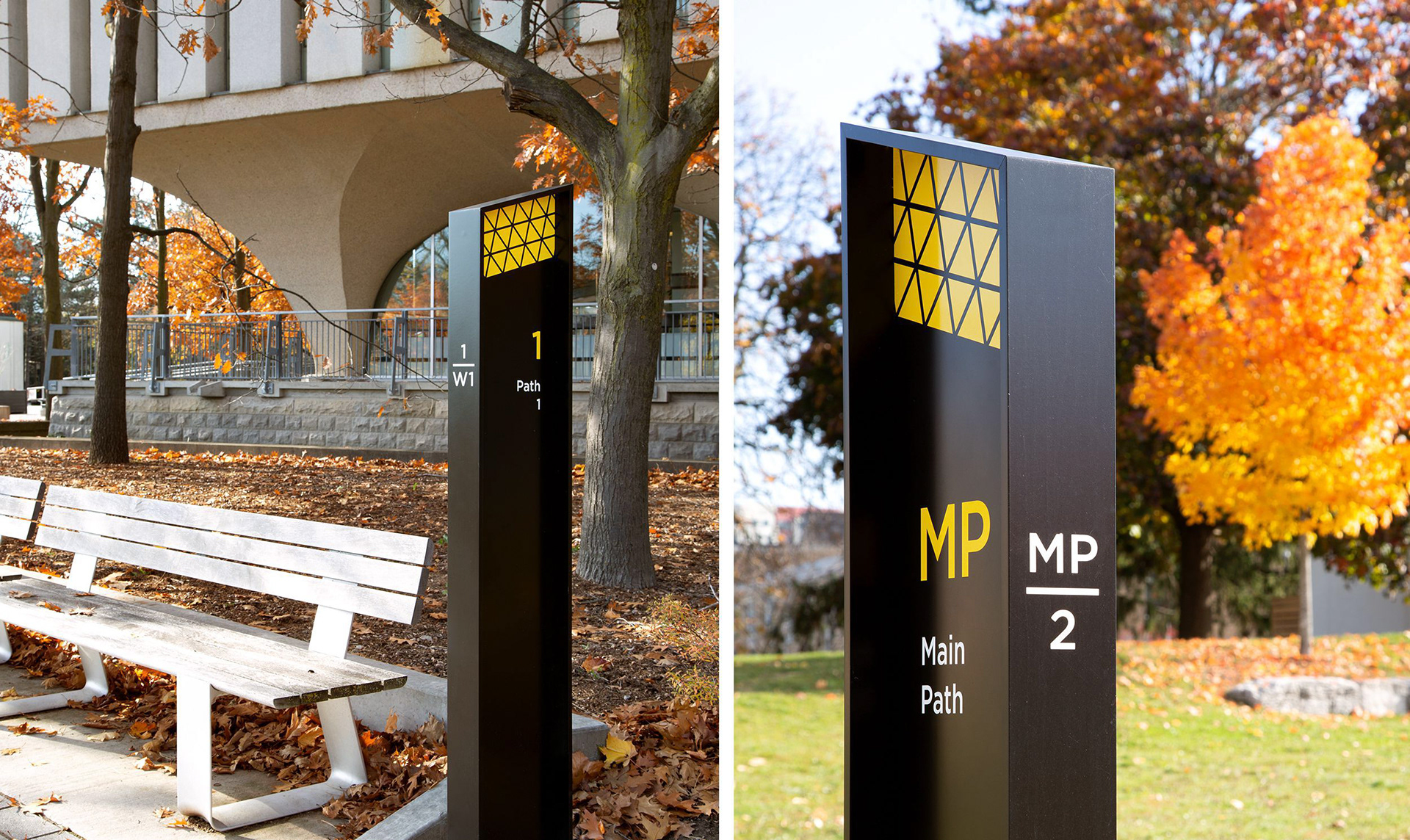University of Waterloo
Client: University of Waterloo
The University of Waterloo in Waterloo, Ontario, boasts a beautiful 1000-acre campus settled in a natural landscape full of greenspace, trees, meandering pathways and multiple elevation changes. While interesting to view and explore, navigation to and within its 100+ buildings was a challenge for those unfamiliar with the campus, due to minimal and inconsistent signage. This is a reality many academic campuses face, and why a well-designed, adaptable wayfinding program can be so important.
We wanted to design a wayfinding program that nestles harmoniously into the park-like environment while making the campus – which is not all grid-like – easier to navigate with a consistent, easy-to-recognize information hierarchy, terminology, and family of sign types.
The wayfinding strategy was based on input from students, faculty, and visitors arriving by car, foot, and transit, about how they understand and use the campus roads and pathways to get from place to place. We also observed people navigating the campus at key decision points.
With a big initiative like this one, which impacts everyone who uses the campus, Waterloo made a point of engaging students, faculty, and staff through extensive visioning sessions and workshops to gather input and feedback on the design during initial and later design phases. The design features elements from both the newer and the older architectural styles found on campus. The triangulated pattern, which resembles a network, or honeycomb, was inspired by Waterloo’s emphasis on connections, partnerships, and multi-disciplinary collaboration – different approaches, groups and perspectives working together to create something great.






